What’s next in our quest for door and lock terminology knowledge? Closers, deadbolts, mag locks, and vertical rods.
Closer
- Controls the closing speed of doors. When properly adjusted, they avoid slamming, reduce door and frame damage, and make the door easier and safer to use.
- There are two types of closers:
- Surface Mounted: These are the most common, efficient, and economical closers. They are typically mounted on the interior face of the door.
- Concealed: Less common than surface mounted, these closers are more aesthetically pleasing as they are hidden from sight. They can be concealed in the floor, door, or frame.
- Automatic closers can be either surface mounted or concealed, and are typically operated by hitting a paddle.
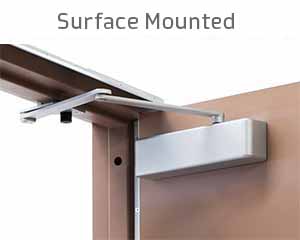
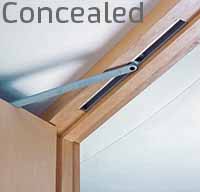
Deadbolt
- Deadbolts are used to secure the door from both the inside and outside of a door.
- There are two main types of deadbolts:
- Thumb Turns: Thumb Turns use a small lever to engage the lock
- Keyed: You must use a key to engage the lock on keyed deadbolts
- A deadbolt can be a combination of keyed and thumb turn. You probably have this combination in your house: keyed on the outside and a thumb turn on the inside.
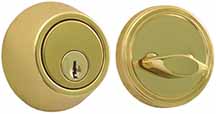
Mag Lock
- Mag locks (short for magnetic/electromagnetic locks) are used to secure doors with an electrical charge that produces a magnetic field. Continuous power must be applied in order for the door to stay locked, making them “fail safe.”
- They are installed on the top outer corner of the door.
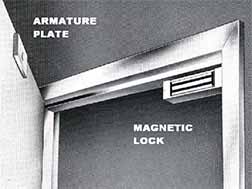
Vertical Rods
- Most exit hardware latches into the side of the frame; however, vertical rod exit devices latch into the header and footer of the frame. The latches connect to a vertical rod that then connects to the panic device. When the panic bar is pushed, it engages the vertical rods and retracts the latches from the frame.
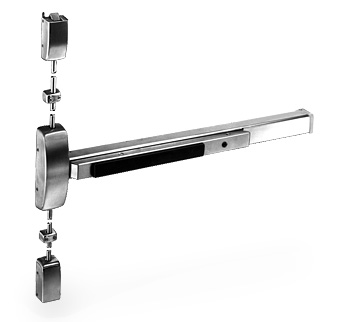
What do you think? Have we answered your burning questions? Are we missing something your dying to know more about? leave a comment in the section below and we’ll answer it in our final installment of the series on Friday!
Google

Does anyone in the US make a lock set that has s dead bolt that can be key locked and can not be unlock using the inside knob. It is used when no one is home. The normal dead bolt can be use normally and key to unlock. Saw this in Australia only, good idea.
We are not aware of such a lock. We would also recommend being very wary of using such a lock as it could potentially lead to liability issues if used in a public space.
Hi Katie, I am just wondering if you know of a lock that has the following functions, as I plan on placing it on my main apartment door:
Scenario:
My spouse is at home and she locks the door from the inside, leaving the key in the key hole.
I come back from work, use my key on the door from outside and I am still able to unlock it without the need of removing my spouse’s key from the door.
What is the name of such a lock?
Thank you.
Hi, Bruce, any double key deadbolt should work, but we actually don’t recommend those. Here’s a great article on the possible hazard a double key deadbolt can cause: http://www.angieslist.com/articles/are-double-keyed-deadbolt-locks-safe.htm. If someone is panicked and trying to escape, they might be too flustered to find the key or to use it properly, which is typically why we recommend the use of a single key deadbolt instead.
I hope this answers your question!
Hi Whitney,
Thank you very much for the reply. However, I believe I may have not explained the question propertly:
The lock can be operated with or without a key in the other side.
The purpose is just so that I can open the door regardless if my spouse locks the door, and forgets the key in the lock, and goes to shower for example. If I come home from work, I should still be able to open it.
Ofcourse, the lock should be able to unlock regardless if there is a key on the other side or not, and function like a typical lock, with the added convinience mentioned above.
Is there a name for such a lock?
Thank you again for your quick response and look forward to hearing from you.